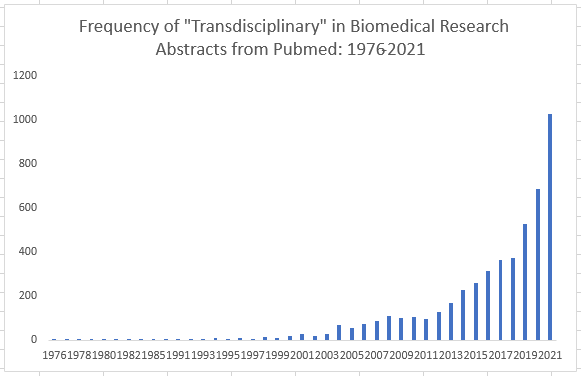Flipping the Script

Fruit Flies?
I shared this puzzled response with an undergraduate mentor when I was just beginning to look into graduate programs about 20 years ago.
Fruit flies are model organisms. When we study them, we aren’t looking to mimic them. But they do allow us to represent a facet of our world that we can study in greater detail. This is what model systems do. Scholarship uses model systems. A controlled experiment is a model. A lens is a model. A discipline is a model.
It turns out, that using fruit flies as a model system has helped us understand the genetics, biochemistry, physiology, circuitry and behavior of a number of human conditions. Knowing their limitations as models, we can unearth the common ground we share so that we can learn more. It’s imperfect. It’s piecemeal. It’s a building block for reconstructing an understanding of our reality, and not its substitute.
“How Does One Reconstruct Reality?”
This is the big question driving Transdisciplinary Studies, and it’s often the one that we overlook. When we recognize that each bit of scholarship represents a fragment of a bigger picture, it is also imperative to identify who has the privilege of the full view. Historically, we have tended to let this integration happen passively. This approach has resulted in our progressing forward through the world while someone or something else has navigated us through the rearview mirror. Transdisciplinarity attempts to integrate those fragments, to the best of our ability, to better represent the reality in front of us.
“How Is Transdisciplinarity Useful?”
Let’s take the outbreak of SARS-COVID 2 in the US from March, 2020. What pieces did we integrate with that picture? What did we choose to exclude? Knowing what we do now, would we have put all our resources into vaccine development? Monoclonal antibodies? Mask-wearing? Health communication? Pandemic economics? How many lives could we have saved if we had approached this differently?
We learned the hard way, that concentrating on each facet separately left (and continues to leave) many holes. And we’re not the only ones to point out the importance of integration. You can see that scholars worldwide are paying attention too. The frequency of studies with “Transdisciplinary” as a keyword had doubled in 2021 compared with 2019. There is increasing recognition that transdisciplinary tools are necessary for the knowledge integration that the world’s problems require.

Of course it can be tempting to want to ignore the integration step. Sometimes, it’s easier to say, “That’s above my pay grade.” Or “That’s not my job.” Sometimes, these are healthy boundaries. Sometimes, these are signs of plausible deniability, ignorance, or willful neglect. It is hard to remove ourselves from our own sandboxes, to engage with other model systems, or to translate and build bridges from what we have learned from our comfortable intellectual compartments.
Transdisciplinary study flips the script: instead of asking, “How will this help my work?” it has us ask, “How will my work help the world?”
Share